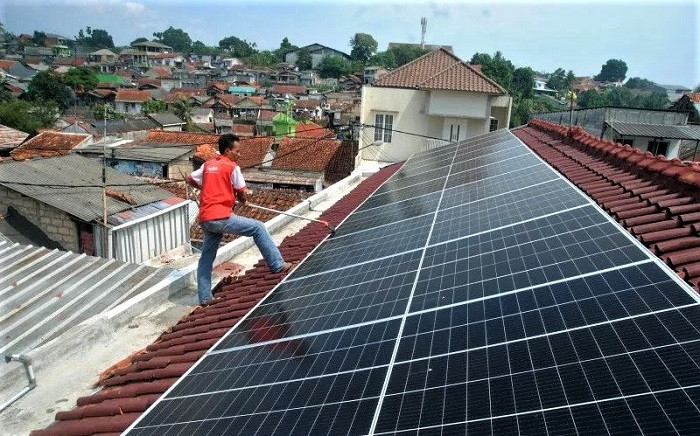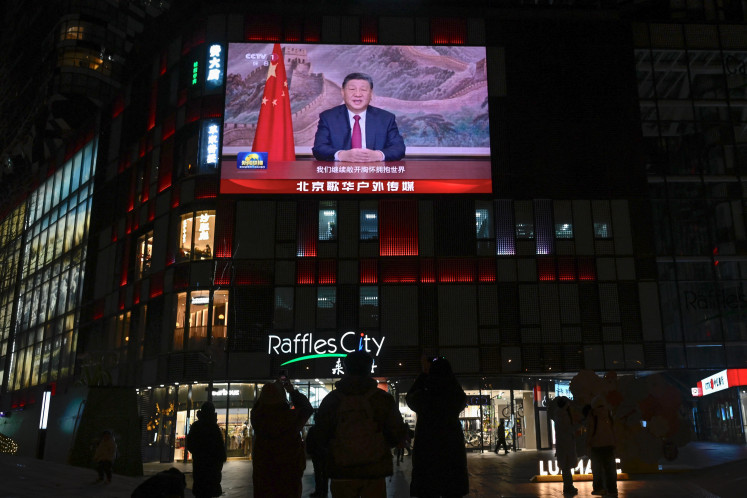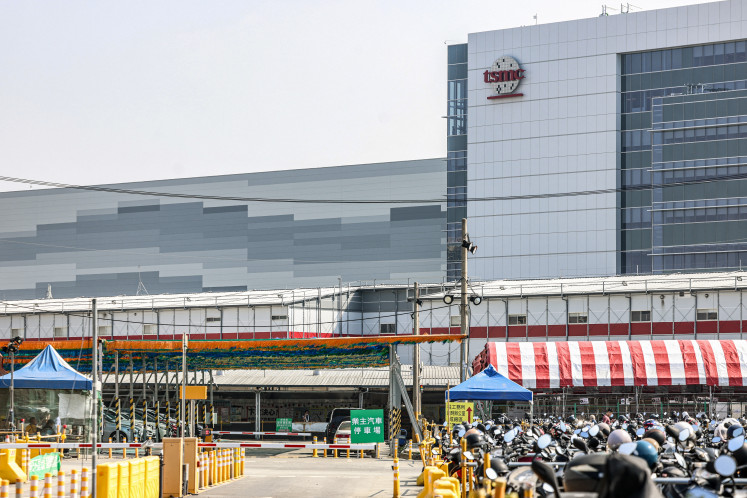Popular Reads
Top Results
Can't find what you're looking for?
View all search resultsPopular Reads
Top Results
Can't find what you're looking for?
View all search resultsUnlocking Indonesia’s renewable energy potential through value chain localization
As of 2020, renewable energy accounted for 33.5 percent of ASEAN’s electricity generation capacity, mainly due to the increase of solar photovoltaic (PV) energy.
Change text size
Gift Premium Articles
to Anyone
R
enewable energy has been a major focus for Southeast Asian nations in recent years. As of 2020, renewable energy accounted for 33.5 percent of ASEAN’s electricity generation capacity, mainly due to the increase of solar photovoltaic (PV) energy.
Indonesia is targeting the addition of 4.68 gigawatts (GW) of solar power capacity by 2030 and is aiming to source 51.6 percent of its added power capacity from renewable sources under a new national master plan. Moreover, by 2060, solar energy is projected to dominate Indonesia's energy landscape, accounting for over 60 percent of the nation's total energy generation. There is still significant potential for solar power, especially given that currently, solar power generation only realizes less than 1 percent of its total potential.
Achieving this ambition will require Indonesia to ensure a supply of good-quality solar PV modules going forward. Localization of the solar PV value chain is essential to secure access to high-quality solar PV modules for the long term. In addition, the localization of the value chain will reduce dependency on imported products, ensuring greater resilience in the face of potential supply disruptions. It will also drive foreign direct investments, increase green jobs and ensure the security of supply for Indonesia. Solar PV localization is projected to contribute more than US$5 billion to $10 billion in additional investment (both direct and indirect) to Indonesia by 2035.
However, the development of renewable energy — especially solar energy — has stagnated for a number of reasons, including the oversupply of fossil-fuel based power generation in the Java region, as well as the lack of a reliable and local renewable energy value chain to support its growth. This encompasses the inadequate supply of high-quality solar PV modules and financial barriers arising from the bankability issue due to the absence of tier-1 PV modules domestically produced in Indonesia.
Localizing solar energy in Indonesia – opportunities and challenges
Indonesia currently possesses an annual solar PV module manufacturing capacity of approximately 2.2 gigawatt-peak (GWp). However, Indonesia relies heavily on solar PV module technology that offers relatively low power capacity and around 15 percent to 17 percent module efficiency. With Indonesia’s PV manufacturing limited to only module assembly using imported cells with relatively high prices, the utilization of Indonesia’s manufacturing capacity remains relatively low at below 10 percent.
Localizing a next-generation solar PV manufacturing value chain, with high quality and affordable prices, is a crucial step toward achieving renewable energy targets for Indonesia. Localizing the value chain will allow Indonesia to secure sufficient supply of tier-1 solar PV modules and unlock economic value for Indonesia in the long run.
However, the localization of solar PV will require substantial capital investment and need critical scale to make it economically feasible. In addition, the government must also consider both economic and operational feasibility to help determine where to make initial investments.
The current strategy for solar development combined with the recent plan for power export of 2 GW alternating current (AC), or 12 GWp of solar power plants, will provide a good initial traction for Indonesia to start localizing the manufacturing of solar PV modules. However, the scale might not be sufficient to justify the localization of the entire solar PV value chain.
Indonesia should focus on localizing solar PV modules and cells in the next few years, which requires at least 2-3 GW production capacity to be economically viable. As the scale increases, Indonesia should expand gradually to polysilicon and ingot/wafer production, which requires a minimum 5-10 GW production capacity to justify the investment. Given the current scale, localizing solar modules and cells would be the best starting point for Indonesia at this current stage of solar PV energy production.
Deciding which part of the value chain to localize first is only the initial step toward achieving the nation’s renewable value chain goals. Designing the right policy measures that can help accelerate investments, partnerships between local players and foreign OEMs and secure local and regional demand are critical to ensure the success of a localization strategy.
Critical pillars for solar PV localization
The successful localization of solar PV manufacturing hinges on three critical pillars — securing demand for domestic and export markets, fostering partnerships with solar PV original equipment manufacturers (OEMs) and providing targeted fiscal and non-fiscal incentives to accelerate investments in the solar PV value chain.
Securing demand for domestic and export markets, especially by leveraging export market arbitrage, is crucial to ensure minimum manufacturing scale is achieved. Ensuring the timeliness and successful delivery of both domestic and export projects is also essential to secure demand.
Strategic partnerships with solar PV OEMs with the right set of capabilities and reach to capture the export market is also crucial. Indonesia is on the radar of many international OEMs, with a significant number of countries expressing interest in establishing manufacturing facilities in Indonesia to support the growing solar industry.
Beyond leveraging international partnerships, the Indonesian government should look at creating and implementing both fiscal and non-fiscal incentives to encourage OEM partners to invest in Indonesia. Fiscal incentives can include tax holidays or tax allowances, as well as reductions in value-added tax (VAT). These measures help to make the business environment more attractive for foreign manufacturers to invest in developing the solar PV manufacturing value chain in Indonesia.
Non-fiscal incentives, including streamlining and accelerating the process of obtaining permits and licenses, are equally important. The government can also consider providing preferential land rates and facility provisions to further incentivize OEMs to invest in the country.
In essence, by developing localization of the solar PV value chain and establishing strategic partnerships with OEMs, Indonesia can accelerate its transition toward a greener and more sustainable energy landscape.
***
The writer is a principal at Boston Consulting Group.










